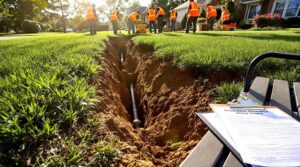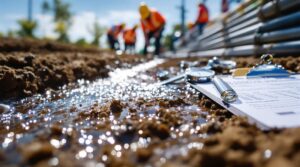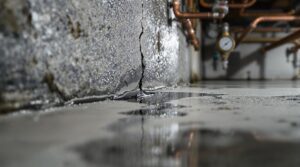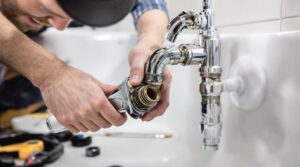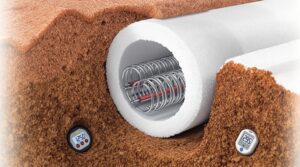The main water line typically enters residential structures at their lowest elevation point, commonly through basement or crawl space walls near water heaters or utility areas. Visual indicators include meter boxes, exposed piping, and utility markings on foundation walls. Professional-grade tools like cable locators and thermal imaging devices can trace buried lines, while utility company documentation provides precise mapping data. Local water departments assist with meter and shut-off point locations. Advanced detection methods reveal additional infrastructure details.
Key Takeaways
- Look for the water meter box near the street or property line, as the main water line typically extends from this location.
- Check basement or crawl space walls for where pipes enter the foundation, often marked by utility company indicators.
- Follow outdoor sprinkler systems and irrigation valves, which usually connect near the main water line entry point.
- Use professional cable locators or hire utility services to trace underground water lines with electromagnetic equipment.
- Review property documentation, building plans, or contact local water departments for accurate main water line locations.
Common Entry Points and Visual Indicators
When locating a residential water main, homeowners should first identify the structure's lowest elevation point, as municipal water lines typically penetrate the foundation where gravitational pressure can be maximized.
Common entry points for the main water line include utility areas adjacent to water heaters, particularly in basements or crawl spaces where the water meter is installed.
In slab foundation construction, the supply line frequently emerges through the foundation wall near laundry facilities or beneath kitchen fixtures. For structures equipped with irrigation systems, the shut-off valve placement typically corresponds with the entry point to accommodate pressure requirements.
Properties utilizing well systems exhibit different configurations, with the main line routing from the wellhead into the structure's mechanical room, where pressure tanks regulate flow.
Visual indicators such as meter boxes, exposed piping, or utility markings on foundation walls can assist in identifying the precise location where the municipal supply enters the building envelope.
Using Tools and Technology to Trace Lines
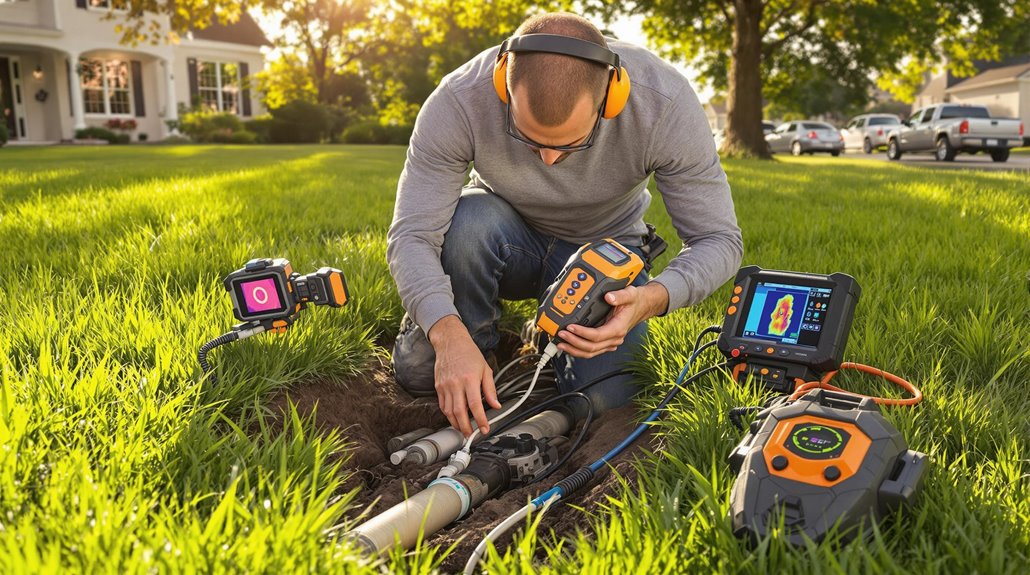
Modern technological advancements provide homeowners and professionals with sophisticated tools for precise water line detection.
Professional-grade cable locators enable technicians to trace the path of buried water lines by connecting a transmitter to the pipe system and utilizing a handheld receiver to detect signals above ground. Similarly, tone generators create electromagnetic pulses through the pipe network, allowing for accurate subsurface mapping.
Thermal imaging technology offers non-invasive detection capabilities by identifying temperature variations that indicate the presence of water lines behind walls or underground.
For metallic pipe systems, specialized stud finders equipped with metal detection features can identify metallic water lines within structural cavities.
These detection methods, while effective independently, are often complemented by utility company services, which provide professional line location assistance.
The combination of these technologies guarantees extensive mapping of main water lines, facilitating maintenance, repairs, and construction planning while preventing accidental line damage.
Working With Local Utility Services
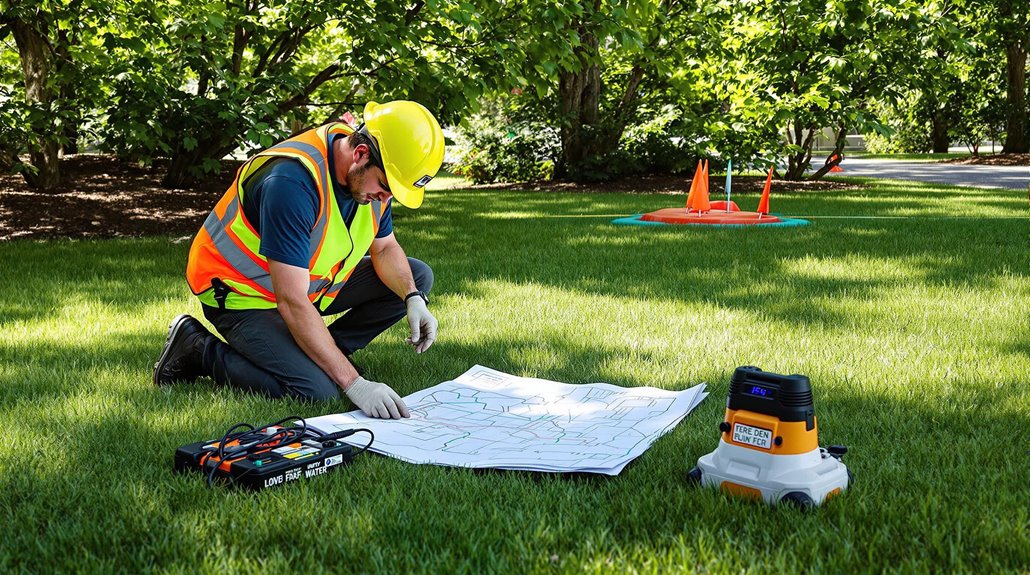
Local utility services represent an invaluable resource for accurately identifying main water line configurations and access points.
Professional utility technicians possess thorough mapping data and specialized equipment to locate underground infrastructure with precision. By contacting 811, property owners can initiate a formal utility line tracing process before any excavation work commences.
Water departments routinely assist residents in determining where the water line enters their property and can help find the meter location. These services typically include identification of the main water valve and curb stop shut-off points, essential information during plumbing emergencies.
Effective communication with utility services guarantees property owners understand their specific water supply configuration and any associated maintenance responsibilities.
Most municipalities provide these location services at no cost, making them an important first step when investigating water line layouts.
Utility specialists can document precise infrastructure positions, preventing costly damages during future excavation or repair work.
Examining Property Documentation and Plans
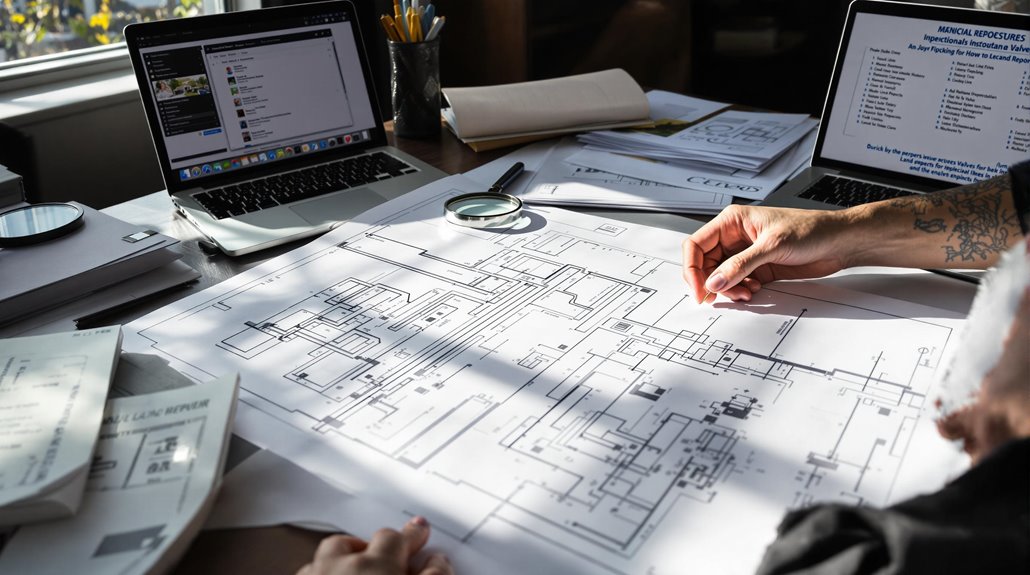
Property documentation serves as a primary resource for locating main water line configurations and critical infrastructure components.
Building plans and blueprints typically contain detailed water line layouts, indicating precise entry points and shut-off valve locations essential for home improvement projects and maintenance.
Professional inspection reports provide historical data regarding previous plumbing modifications and infrastructure development.
Local municipal records offer documentation of water line connections from street mains to residential properties, while land surveys detail key utility placement and easements.
These documents collectively establish a thorough understanding of the property's water distribution system.
For properties within planned communities, homeowner association documentation may specify standardized water line entry configurations.
Identifying Indoor and Outdoor Access Points
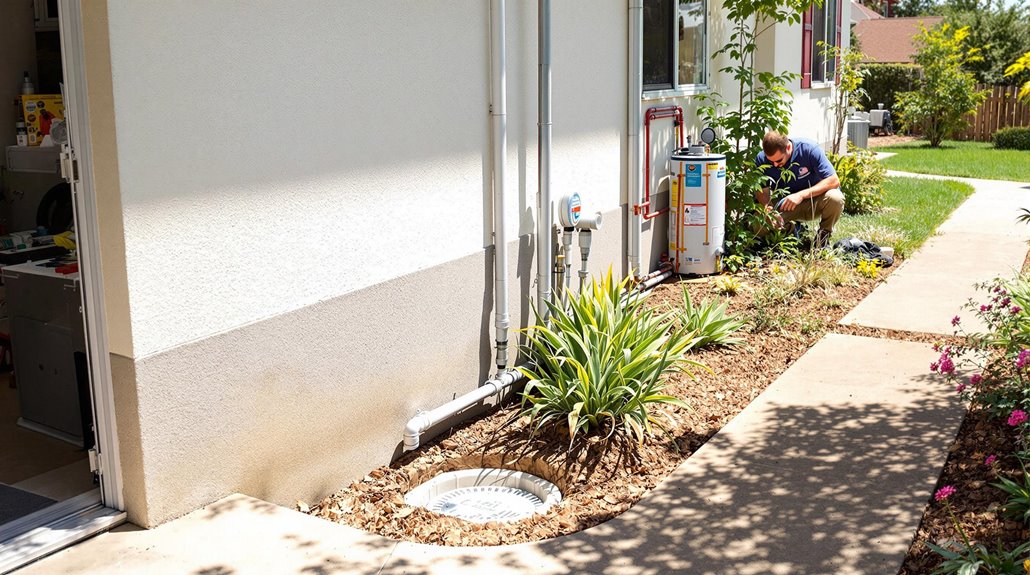
Three primary zones warrant thorough inspection when locating a residential water main's access points. For homes with basements or crawlspaces, the main water line typically enters through a foundation wall, with the shutoff valve inside these utility areas.
Properties built on concrete slabs often route water supply lines near water heaters or through garage walls, requiring inspection of these specific zones.
The second critical inspection area encompasses exterior perimeters where the water meter connects to municipal services. Technicians can follow the pipe from this meter to determine where it enters the home.
In warmer regions, underground access panels may conceal main shutoff points.
The third zone involves auxiliary systems, particularly irrigation installations. Backflow preventers and primary supply lines for sprinkler systems frequently indicate proximity to the main water line entry point, providing valuable location indicators for service professionals.
The Benefits Of Consulting A Public Adjuster
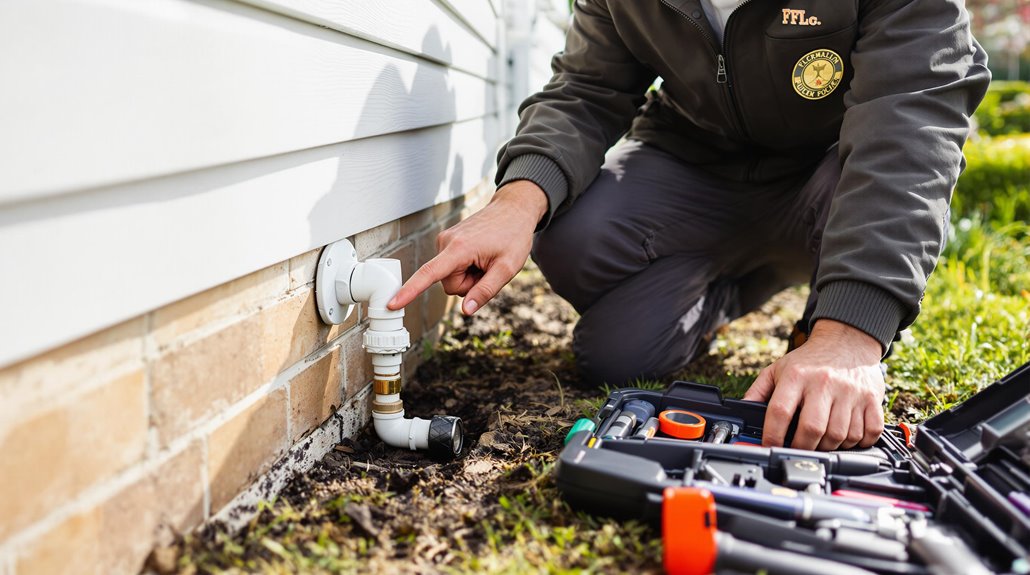
When evaluating water line issues, consulting a licensed public adjuster provides critical expertise in documenting damage and maneuvering complex insurance claims processes.
Public adjusters conduct thorough, objective assessments of water-related property damage while managing claim documentation requirements and policy interpretations.
Statistical evidence demonstrates markedly higher settlement outcomes with professional adjustment services, often yielding 800% greater compensation compared to self-managed claims.
Expertise In Insurance Claims
Throughout the complex process of filing water damage claims, a licensed public adjuster can serve as an invaluable asset by maximizing settlement outcomes and streamlining the claims procedure.
When issues with the main water line or shutoff valve result in property damage, these professionals possess the technical expertise to accurately assess the impact of water-related incidents, ensuring thorough documentation of affected areas where the water line runs.
Statistical evidence demonstrates that policyholders utilizing public adjusters' services typically secure 20-50% higher settlements compared to self-managed claims.
These specialists navigate intricate policy terminology, identify coverage clauses related to different types of water damage, and handle time-sensitive documentation requirements.
Their proficiency in managing claims enables property owners to focus on addressing immediate concerns, such as locating and operating the main shutoff valve to prevent further damage.
Objective Damage Assessment
Professional damage assessment protocols conducted by public adjusters provide homeowners with detailed evaluations that extend beyond surface-level observations. When examining water-related claims, they meticulously document damage patterns from main valve failures to property line breaches, ensuring complete coverage under the insurance policy.
| Assessment Component | Technical Evaluation |
|---|---|
| Infrastructure Analysis | Main water shut-off valves, supply lines, distribution systems |
| Damage Documentation | Photometric evidence, moisture mapping, structural integrity |
| Cost Impact Assessment | Materials replacement, labor requirements, remediation protocols |
Their systematic approach evaluates both direct and consequential damages, incorporating advanced diagnostic tools to identify hidden issues that could affect claim values. This methodical documentation strengthens the policyholder's position during settlement negotiations, particularly in cases involving complex water damage scenarios that require extensive remediation efforts.
Streamlined Claim Process
Engaging a public adjuster considerably expedites the insurance claims process while maximizing potential settlement values for water-related damages.
When issues with the water main or shutoff valve near residential properties result in damage, these licensed professionals leverage their expert negotiation skills to secure ideal compensation.
Studies indicate homeowners who retain public adjusters typically receive 20-30% higher settlements compared to those who independently navigate the claims process.
These specialists efficiently manage documentation related to water flow disruptions, whether caused by the need to find the Main Water line or incidents requiring emergency measures to turn the valve clockwise.
Higher Claim Payouts & Settlements
Statistical evidence consistently demonstrates the substantial financial advantages of retaining public adjusters for water-related insurance claims.
When dealing with main water shutoff valve incidents, policyholders handling claims independently often receive 20-50% less compensation than those utilizing professional assistance. Public adjusters' expert knowledge of the insurance claim process enables thorough documentation of damages related to valve handle malfunctions and uncontrolled flow of water events.
Their professional evaluation methodology guarantees higher claim payouts by identifying often-overlooked damages stemming from main water line failures.
Public adjusters know where the main sources of damage originate and apply industry-standard pricing metrics to substantiate claims. This expertise proves particularly valuable in complex water damage scenarios, where multiple systems may be affected, resulting in settlements that more accurately reflect the true scope of repairs needed.
About The Public Claims Adjusters Network (PCAN)
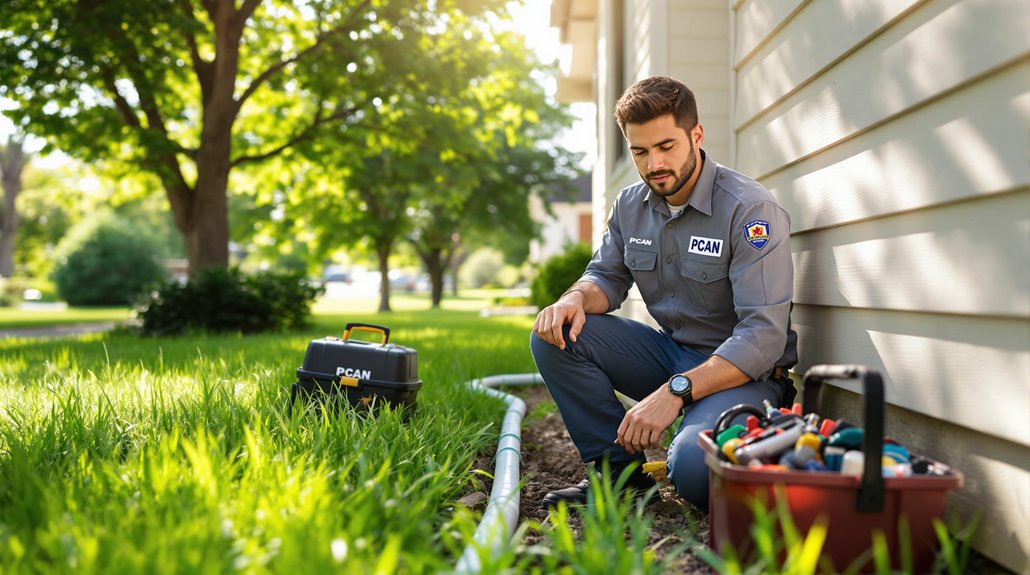
The Public Claims Adjusters Network (PCAN) operates as a nationwide consortium of state-licensed public adjusters who undergo rigorous vetting and verification processes.
These specialists are particularly adept at handling water damage claims, whether the line enters the house through the basement or crawlspace, or issues arise near where the water heater is located inside the living space. Their expertise extends to scenarios involving damage from burst pipes behind walls and emergency situations requiring immediate water shut-off.
PCAN maintains stringent quality control through mandatory annual audits of member adjusters' licenses and complaint records.
Operating across 40+ states and handling over 30 claim types, the network exclusively admits professionals who demonstrate exceptional expertise through an intensive application and interview process.
This selective membership guarantees policyholders receive representation from adjusters who maintain the highest standards of ethics and professionalism in managing property damage insurance claims.
Frequently Asked Questions
How to Tell Where the Main Water Line Enters a House?
Like a detective following clues, locate the main water line by tracing utility markers from street meter, conducting plumbing inspection near foundation entry points, and analyzing property layout documentation.
How Do I Find My Main Water Pipe?
Locate water meter first, then utilize pipeline tracing equipment alongside plumbing inspection tools. Contact neighborhood utility for service line materials. Professional detection methods include acoustic leak detection and ground-penetrating radar. Once you have gathered the necessary tools and information, begin by inspecting the visible pipes for any signs of moisture or corrosion, which can indicate a potential leak. Additionally, researching how to detect water line leaks can provide further insight into effective techniques that you may not have considered. Remember to monitor your water bill for any unexpected increases, as this may also signal a hidden leak in your system.
How to Find Water Line Going to House?
Like a river's path reveals its source, trace the water line by locating the meter, following utility markings, and inspecting visible pipes from curb to foundation, considering seasonal ground shifts.
How Far Down Is My Main Water Line?
Main water line depth typically ranges 6 feet in cold climates to 18-24 inches in warmer regions. Accurate location requires utility markings, property surveys, and soil assessment before excavation.
